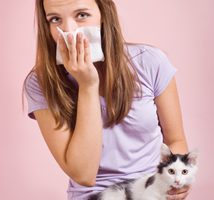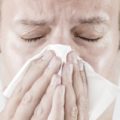
Recently, we began to discuss some of the most common allergies that exist here in the U.S., according to the Asthma and Allergy Foundation of America (AAFA). While some symptoms seem to exist across the board, some branches of the allergy disease are more severe than others, and some are even more common.
Our previous list only covered about half of the most prominent allergies that attack Americans each year.
While reading this list, keep in mind that all allergies are an attack on the body by outside factors – like pollen or food allergens – that create an overreaction from the immune system. Most allergens can cause itchiness, sneezing, wheezing and coughing, but most of the time, these symptoms are treatable with some preventative allergy control products and medication.
So here is the rest of that list, so that you can be as informed as possible in order to take every preventative measure possible.
Allergic Conjunctivitis: This type of allergy most commonly affects the eyes, and tends to be a problem for people who have other allergic diseases like dermatitis, asthma and rhinitis. It is generally characterized by inflammation of the eyes and distress of the lids and skin surrounding the socket.
Atopic Dermatitis: This type of allergy is felt in the skin of individuals and generally results in inflammatory skin diseases like eczema. This means lesions, scaling and flaking of the skin. In children, eczema is often made worse by allergies or irritants. In some cases, medical treatment is necessary, while in others, cooling or medicated lotions will do the trick.
Contact Dermatitis: According to the AAFA, "Characterized by skin inflammation; this is the most common occupational disease representing up to 40 percent of all occupational illnesses. Contact dermatitis is one of the most common skin diseases in adults. It results from the direct contact with an outside substance with the skin. There are currently about 3,000 known contact allergens."
Insect sting or bug bites: The problem with this type of allergen is that it is largely unavoidable. Bug bites can happen anywhere to anyone, which means that even super-vigilance might not protect you from this harmful trigger. Symptoms usually include pain, itching and swelling of the sting site and other areas nearby. It is also common to experience anaphylaxis with this particular allergen. Those who are affected by insect stings are most commonly allergic to bees, hornets, wasps, yellow jackets and fire or harvest ants.
Urticaria: While this type of allergy is a reaction of the skin, and oftentimes is a skin condition on its own without allergens attached to it at all, in some cases, environmental allergens create a reaction known as urticaria. Symptoms of this skin issue are itchy, raised bumps on the skin which are surrounded by inflamed areas.
In order to avoid these allergies entirely, investing in the best allergy control products and consulting with a professional allergy specialist is the best practice.
Remember that this list was a broad overview, and over the next few weeks, we plan to explore each of these allergies in more depth. Be sure to stay tuned to the blog for more information on these interesting and inconvenient diseases and how best to handle them in your life. For more information on how we can help, contact Allergy Be Gone today!









